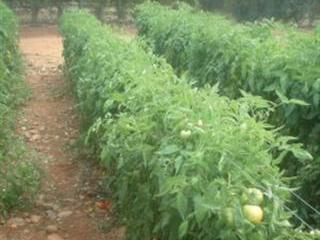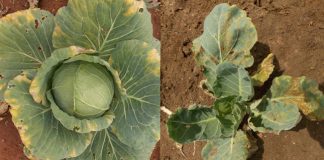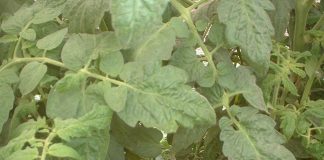
When it comes to the type of product used and the thoroughness of spraying required, a lot depends on what pest or disease you’re dealing with. Notwithstanding this, even if systemic products are being used, better results will be obtained with thorough, uniform wetting.
I’ve come across numerous instances where a farmer, in the process of spraying, has commented on how well the apparatus is working. This pronouncement is usually based on the amount of fine droplets flying around. And invariably these farmers are shocked and surprised when I point out that the plants aren’t being properly sprayed, as you’ll find the underside of the leaf isn’t properly wetted.
This is the sort of situation where trans-laminar systemic products are still effective, but contact insecticides and non-systemic fungicides aren’t. These need to coat all surfaces to work properly. The coppers and dithiocarbamate products fall into this latter category.
It’s therefore important to set up a rig able to wet all surfaces, and which is suitable for prophylactic as well as systemic products. Usually, in order to wet the underside sufficiently, the outer side of the leaf must be just about dripping wet. You can get away with a less ‘thorough’ job for systemic products provided that the active ingredient is sufficient for the area sprayed.
The problem with tomatoes is that the leaves hang downward, making it difficult to reach the underside. Higher pressures and higher volumes will only partly solve the problem. The former, for example, may only press the outer leaves flatter against the plants, producing a wall or barrier. You need to get the angle of the spray right in order to be more effective.
Air-assisted sprayers have a fan that blows the droplets in and move the foliage to make wetting easier. Electrostatic sprayers charge the droplets magnetically, allowing easier coverage of inaccessible parts. Then there are sprayers with nozzles in a vertical row, where a combination of pressure and nozzle size determine the size of the droplet.
Correct angle
It’s with the latter type sprayer that you need to take extra care in getting the nozzle angle correct. The aim is to direct the lower nozzles at a sufficient angle so as to force droplets to get behind/under the leaves. Usually, when the inner part is wetted, the outer side of the leaves will also be well wetted.
When setting up the sprayer, experiment with nozzle angles using just water. Spray a section and then immediately examine the underside of the leaves and inner parts of the plant to see what effect you’re getting. It takes a lot of fiddling to get the inner part well wetted without having too much product run off the plant – which would be wastage. You also need to bear in mind that the older leaves are more vulnerable to disease. They’re near the ground and more difficult to wet.
Droplet size
Something else to remember: the more disease spores there are in the air, the greater the ‘disease pressure’ on the plant as a whole, making it important to ensure this part of the plant is well protected. Finally, if the droplets are too small, they’re more likely to drift away from the plant and evaporate, especially in dry, windy conditions, of course. If the droplets are too big, it will be hard to wet the plant properly, and you may get run-off. Droplet size is thus also very important for achieving the most effective results when spraying.
Contact Bill Kerr at [email protected]. Please state ‘Vegetable production’ in the subject line of your email.













